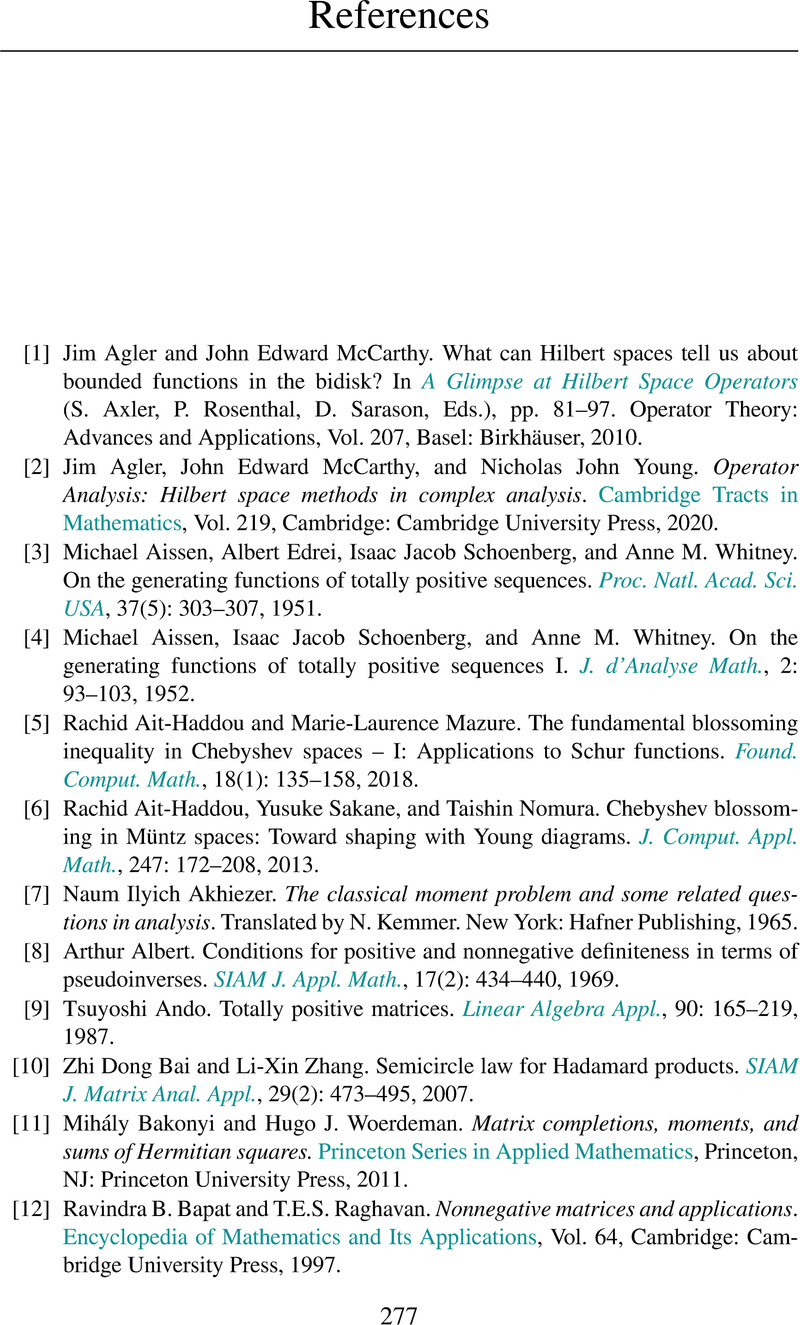Book contents
- Frontmatter
- Dedication
- Contents
- Foreword
- Preface
- Part One Preliminaries: Entrywise Powers Preserving Positivity in a Fixed Dimension
- Part Two Entrywise Functions Preserving Positivity in all Dimensions
- Part Three Entrywise Polynomials Preserving Positivity in a Fixed Dimension
- Part I: Bibliographic Notes and References
- Part II: Bibliographic Notes and References
- Part III: Bibliographic Notes and References
- References
- Index
- References
References
- Frontmatter
- Dedication
- Contents
- Foreword
- Preface
- Part One Preliminaries: Entrywise Powers Preserving Positivity in a Fixed Dimension
- Part Two Entrywise Functions Preserving Positivity in all Dimensions
- Part Three Entrywise Polynomials Preserving Positivity in a Fixed Dimension
- Part I: Bibliographic Notes and References
- Part II: Bibliographic Notes and References
- Part III: Bibliographic Notes and References
- References
- Index
- References
Summary

- Type
- Chapter
- Information
- Matrix Analysis and Entrywise Positivity Preservers , pp. 277 - 290Publisher: Cambridge University PressPrint publication year: 2022



